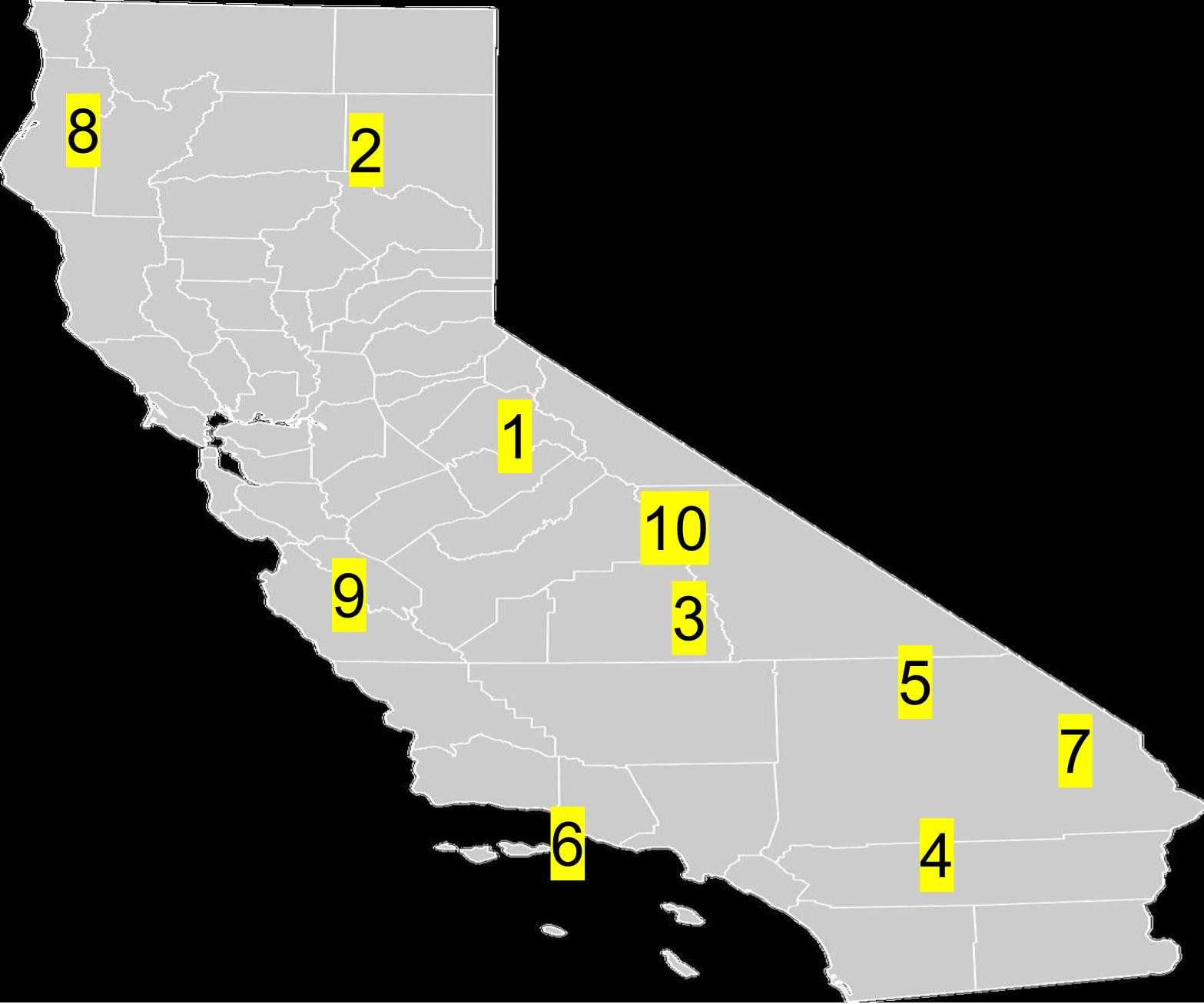
California Dreamin' Trivia Quiz
National Park Bucket List
Welcome aboard the Phoenix Rising California National Parks bus tours! We have ten amazing destinations that we will visit on the tour! So fasten your seatbelts and enjoy the ride!
A label quiz
by Team Phoenix Rising.
Estimated time: 3 mins.
- Home
- »
- Quizzes
- »
- Geography Trivia
- »
- USA
- »
- USA - Parks
